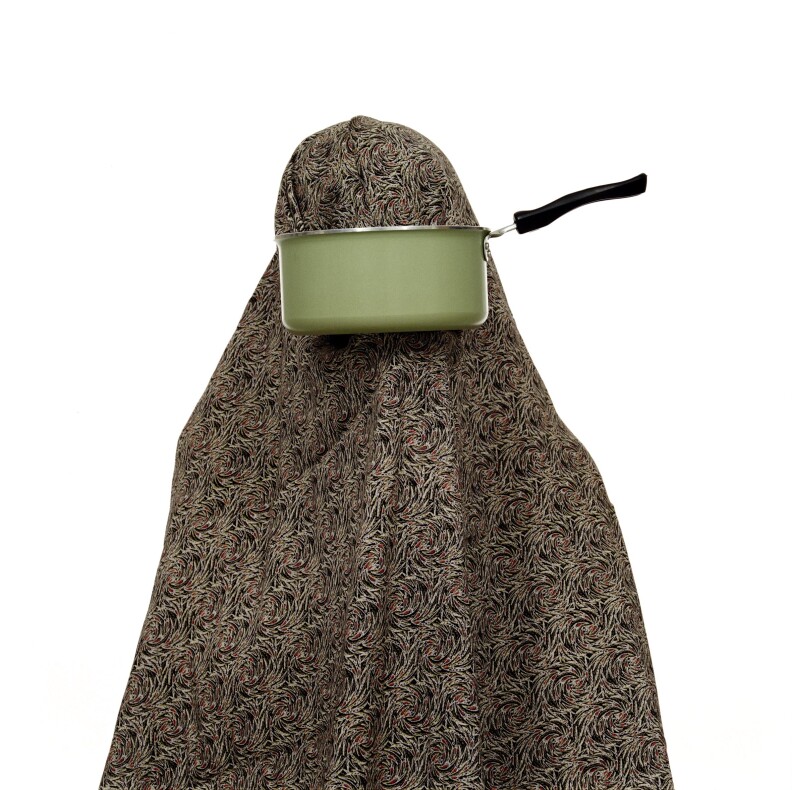When you're an artist in Iran, you live a harsh reality.
Make a politically subversive sculpture and you're censored. Create a painting that challenges religious norms and you're censored.
But a new art exhibition showcases how Iranian photographers are able to create images into social and political commentary that fly under the radar.
"The government of Iran is a religious theocratic government. And therefore it controls every facet of creativity in Iran," says Abbas Daneshvari, curator of a collection of Iranian photography opening this Saturday at the Fine Arts Gallery at Cal State Los Angeles.
"[But artists] have arrived at the point that they can express themselves in symbolic and metaphoric terms wherein it's rather difficult to decipher their messages."
For example, "Untitled" is a photo collage of two men who look like they're locked in a bloody fight. However, one could also say they're drawn together in a passionate embrace. The image is by Sadegh Tirafkan, who is gay.
"The images communicate something sexual and at the same time violent," says Daneshvari, "but it's rather difficult for a system to see it as purely sexual and the violent aspect, of course, isn't something that they would object to."
Another picture he highlights seems pretty mundane. "Reza Abbasi," by Mohammad Ghazali is just a photo of a random street. However, it's actually taken from the eyes of a sculpture of the revered artist Reza Abbasi.
"We look up to these monuments as our ideals," says curator Abbas Daneshvari, "and when we see ourselves from the eyes of the monuments we are precisely what we have always denied ourselves to be: a people in flux, a culture that is really governed by ordinary, mundane, quotidian principles."
These hidden meanings are rife throughout Iranian photography, he says, because the form specifically allows artists to break with tradition and reality.
"You question your own history, you question your own identity, you question your own thoughts, you even question your own language," says Daneshvari.
The exhibit of Contemporary Iranian Photography runs at the Fine Arts Gallery of California State University, Los Angeles from April 12 until May 7.








